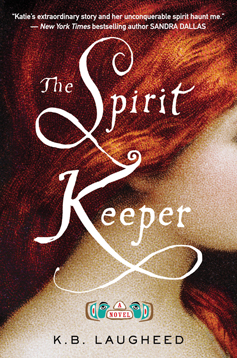A beautiful dream is kept within
 CREDIT: PENGUIN GROUP (2013)
CREDIT: PENGUIN GROUP (2013)The Creature of Fire and Ice is a big name to live up to, yet Katie O'Toole is determined to fulfill her destiny at any cost.
Abused and misused, Katie O’Toole has lived a life of drudgery and despair. Watching her family self-destruct thanks to rum, suffering the abuses of an unloving mother and awaiting a marriage that promises nothing but further misery, Katie longs only to escape. What she never imagined was that her salvation would come in the form of a violent raid and the smiling face of a man from a world so unlike her own.
With events taking place in 1747, The Spirit Keeper speaks of Katie’s journey from white colonialist to the Spirit Keeper in her own words. The novel is often personal, as Katie holds nothing back in her retelling of events, often sharing her fear, wonder and confusion with the reader.
The novel is written in such a way that makes it a bit difficult to get into at first. The insistence on fake “old-timey” writing, mixed with a large number of double-negative sentences, occasionally makes passages almost unreadable. However, once you get used to Katie’s way of writing, it’s easy to lose yourself in the story that unfolds.
Perhaps the most interesting part of the book is the exploration of First Nations cultures. While there are some problems with generalizing, and with insisting on referring to them as “Indians” or “savages” long after the point where such words should have been dropped, the overall trend of the novel is towards cultural education and understanding.
What does come across as rather sad is that even after months with Syawa and Hector, Katie’s captors/ saviours, she still refuses to accept the truths being shown to her. As evidence piles up, Katie often reverts back to her Euro-centric upbringing instead of listening to those who are trying to show her that the world can be so much more than she imagines.
Those brief glimpses where we do get into First Nation’s traditions and rituals, however, are both beautiful and enlightening. Complex ideas such as Gifting and Two-Spirit are touched on with a clear desire to understand, and the rituals and celebrations, seen through the eyes of a colonialist, are still clearly so vibrant and real. One can almost feel the warmth of the ceremonial fires and see Syawa’s intricate moves as he again and again tells the story of his Vision.
There is one big issue with the book, and that is the tacit acceptance of abuse. Much time is given to excusing cruel and violent behaviour. There’s a mindset in the characters of not having a choice, of circumstances or drinking dictating behaviour in a way that is inevitable. While cultural and societal circumstances can definitely influence behaviour, it is impossible to agree with Katie’s opinion that we lack a choice in staying with abusive partners.
Overall, The Spirit Keeper provides an interesting insight into a world long removed from us by time. For the most part, difficult topics are approached with sensitivity and understanding. The characters are as rich and full of depth as the world they inhabit, a world we can only see in dreams.














